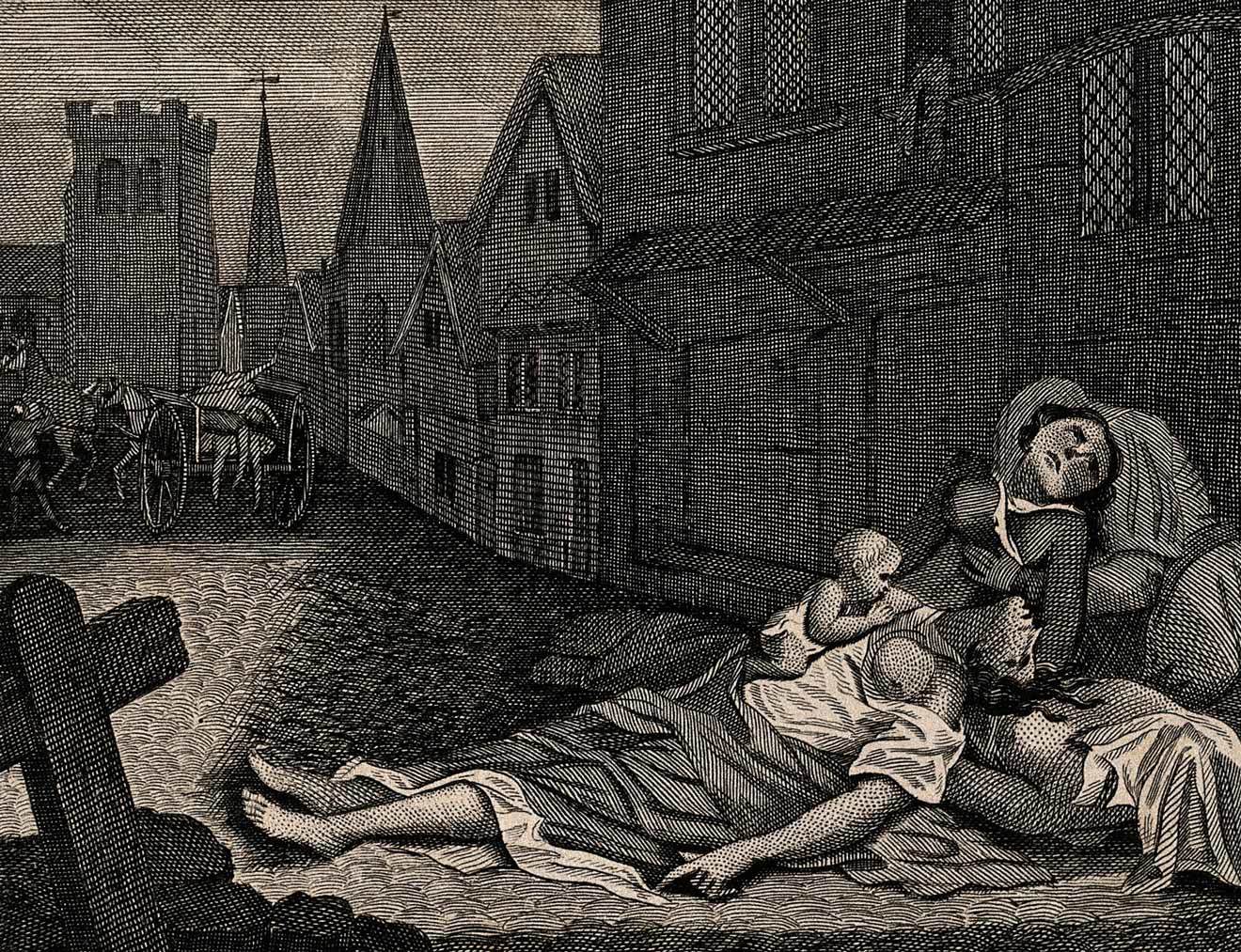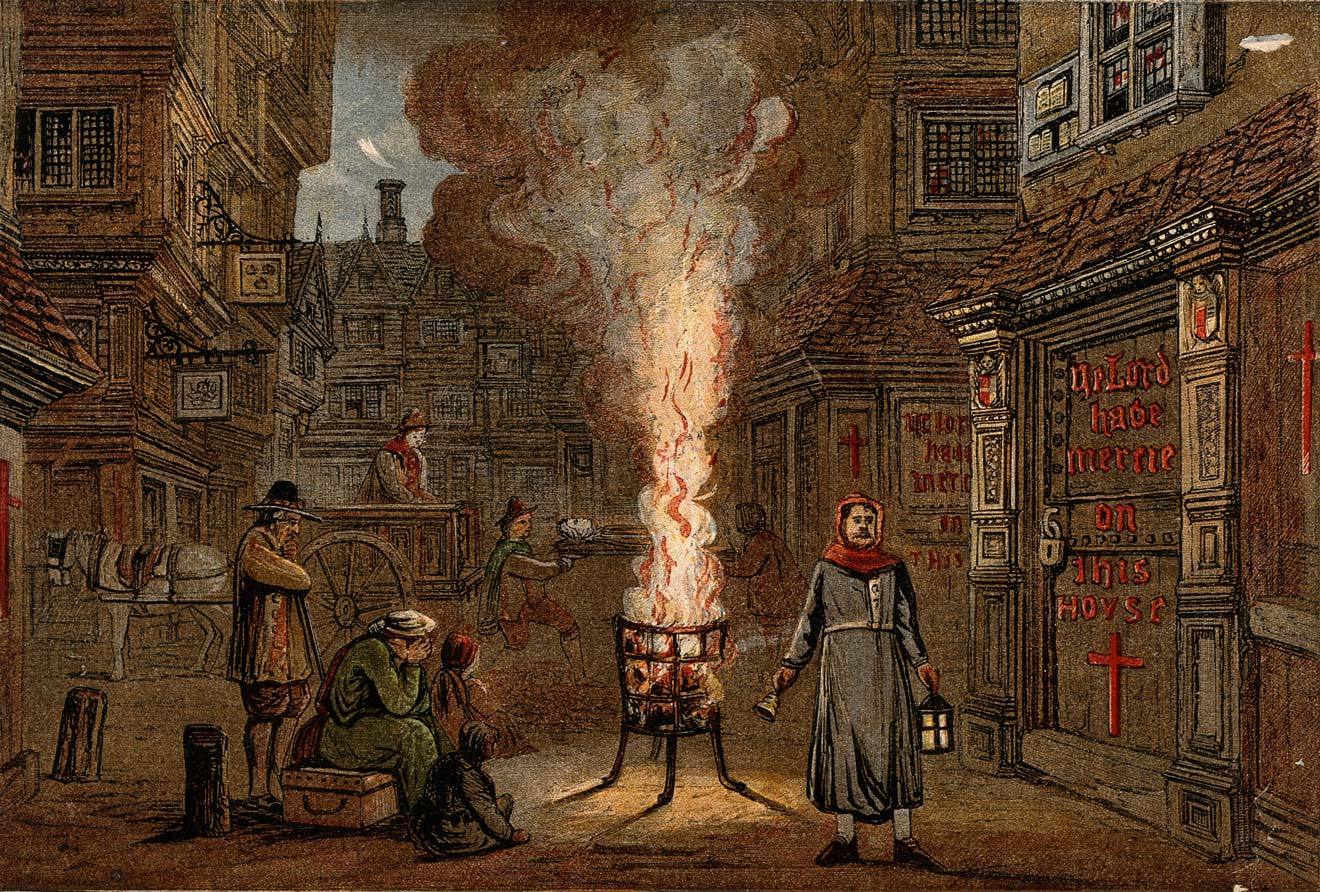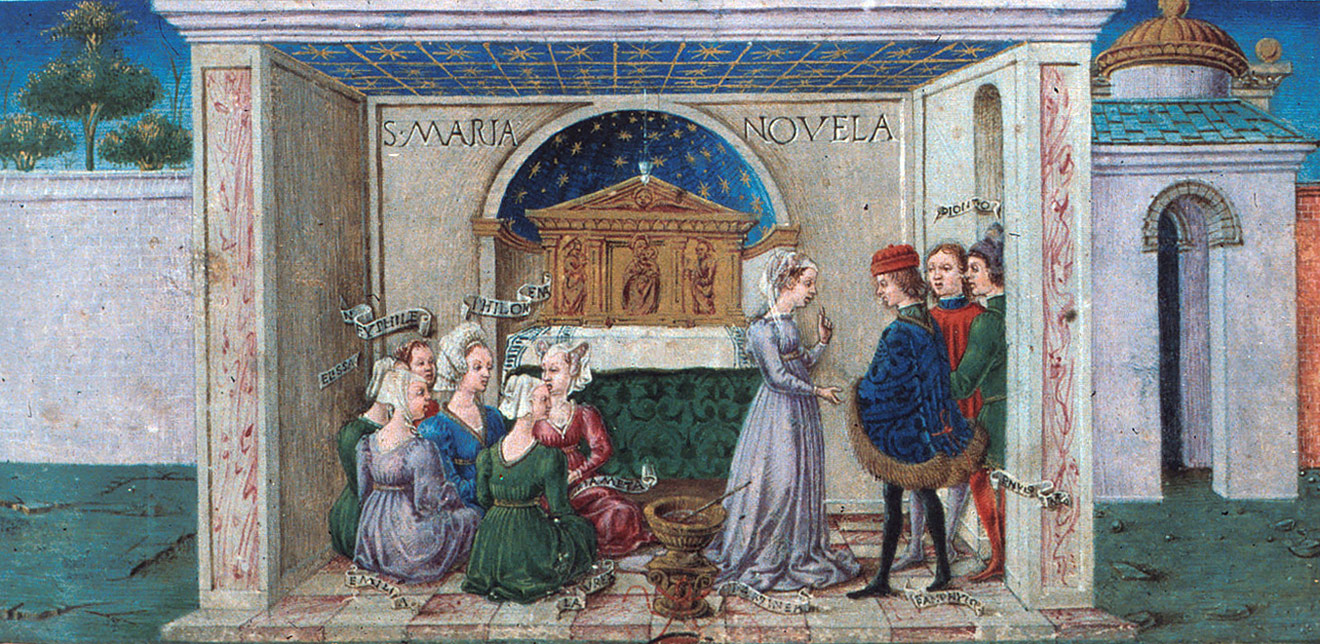
In the winter of 1664–1665 there began an epidemic of plague, which would later be called Great. The first patients appeared in impoverished port districts and St. Giles parish. Now the British Museum is nearby, but then it was a distant suburb. However, the time was cold, and the disease was almost dormant at first. Only when it became warmer the plague came in full force. The Plague is a regular visitor to London. The memory of each generation living in the XVII century, there was one or more outbreaks. In 1603 it killed 30,000 people, in 1625 – 35,000, in 1636 – another 10,000. However, the Great Plague of 1664-1666 blocked them all, accounted for 70-100 thousand Londoners, that was about 20 % of citizens.
Contemporaries of the Great Plague were convinced that it was brought from Holland. In the mid-1660s Leiden and Amsterdam lost tens of thousands of inhabitants. Someone claimed that the Dutch, with whom England then fought, deliberately sent the disease to the island.
When in 1664 the plague again visited London, the authorities began to introduce the first measures designed to slow down its spread. Special inspectors went around the neighborhood in search of the sick. Plague-struck houses were ordered to be boarded up to isolate the infectious and to prevent the pestilence from spreading throughout the city. However, the number of victims has increased rapidly. In early 1665, King Charles II and his court decided to leave London and moved to Oxford. Many wealthy citizens left the city with them: merchants, lawyers, professors, priests, doctors, pharmacists.

In the summer of 1665, the epidemic peaked. Newspapers published weekly reports on the number of deaths – Bills of Mortality. And the numbers were growing at an alarming rate: one thousand, then two, by September – seven thousand a week. The cemeteries at the churches were overcrowded, and the victims of the plague were quickly dumped into common ditches. Trying to stop the epidemic, the Lord Mayor ordered the destruction of dogs and cats, which were thought to be those who spread the infection. However, the effect of this measure was exactly the opposite of what was intended, because cats killed rats that actually were spreading the infection. If, as believed, the infection is transmitted through the air, you need to protect yourself with the help of pungent odors and incense. At the crossroads of the streets it was ordered to make bonfires. Rich Londoners burned sulfur, frankincense, hops. The poor are old shoes. Authorities recommended, and in some places even ordered, tobacco smoking.

However, the main and only effective measure was to isolate the sick or to isolate those who are still healthy. Therefore, from antiquity, during epidemics, cities were closed, and barriers were put up on the path of strangers. In 1377, measures were taken in the port of Ragusa (now Dubrovnik) on the Adriatic Sea to protect the city from the plague. All ships arriving from infected or potentially infectious areas had to wait thirty days before their crew was allowed to land. This period of isolation was called trentina (from the Italian word trenta – “thirty”). For those who came to the city by land, this period was forty ( quaranta) days.

Separate houses, streets or neighborhoods were isolated inside the cities. In London, houses where they were plagued, locked and boarded up outside. So that the patients did not run away and did not multiply the infection, sentinels were put up at the doors. However, residents regularly tried to deceive them and get out of forced confinement.
Desperation made people clutch at any straw. Londoners began to buy amulets against the plague of infection. Miraculous doctors multiplied everywhere, promising effective remedies that could protect against a deadly disease and cure those already sick: “flawless safety pills against the plague”, “the best strengthening remedy against unhealthy air”, “an incomparable potion against the plague, never used before”, “ the only effective healing water “,” the royal antidote for any disease. ”
In late autumn 1665, the epidemic began to decline. In February 1666, King Charles II returned to London. However, the city soon awaited another blow. After the Great Plague, the Great Fire came. On September 2, a fire broke out in the Thomas Farriner bakery on Padding Lane, which quickly spread and devoured the City of London: more than 13 thousand houses, 87 churches and St. Paul’s Cathedral. After the fire, the city was reconstructed, increasing the width of the streets so that during the next plague the infection would be more difficult to spread.

Thaddeo Crivelli miniature to the Decameron by Giovanni Boccaccio. 1467
Via Bodleian Library, Oxford
According to the well-known formula, which is attributed to Napoleon, every French soldier wears a marshal’s baton in a satchel. But in the same satchel often dangerous microorganisms hid, which, together with armies and their convoys, covered enormous distances. Until World War II, the most widespread killers during armed conflicts were not arrows, bullets, and cores, but microbes. The war was closely followed by its eternal companions – famine and pestilence. Roads were filled with crowds of soldiers, refugees, and merchants who carried the disease like letters, the postman. In the years 1627-1628, during a campaign to pacify the Protestants, the eight-thousandth royal army crossed France from La Rochelle on the Atlantic coast to Monfer, not far from the modern borders of Switzerland and Italy. Together with this, plague bacilli spread across the country.
Epidemics take advantage of the roads, bridges, ships, trains, and planes we create to speed up communications between cities, regions, countries, or continents. A good example is another deadly infection – cholera.
🖋️ Text via Arzamas.Academy
📌 The Bunget Arts & Culture 2020
